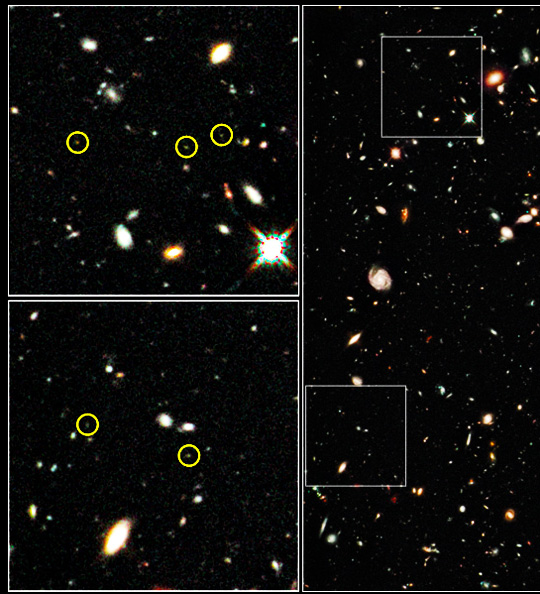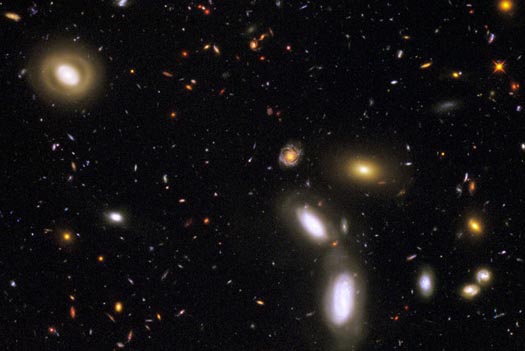“To our surprise, the results show that these galaxies at 700 million
years after the Big Bang must have started forming stars hundreds of millions of years earlier, pushing back the time of the earliest star formation in the universe.”
- Ivo Labbe, Ph.D., Carnegie Institute of Washington
“These galaxies are only 1/20th the Milky Way's diameter.
...Yet they must be the seeds from which the great galaxies of today
were formed.”
- Pascal Oesch, Ph.D., and Marcella Carollo, Ph.D.,
Swiss Federal Institute of Technology
“The faintest galaxies are now showing signs of linkage
to their origins from the first stars. They are so blue that they
must be extremely deficient in heavy elements, thus representing
a population that has nearly primordial characteristics.”
- Rychard Bouwens, Ph.D., Univ. California-Santa Cruz


January 6, 2010 Baltimore, Maryland - NASA's Hubble Space Telescope has broken the distance limit for galaxies and uncovered a primordial population of compact and ultra-blue galaxies that have never been seen before. The deeper Hubble looks into space, the farther back in time it looks, because light takes billions of years to cross the observable universe. This makes Hubble a powerful “time machine” that allows astronomers to see galaxies as they were 13 billion years ago, just 600 million to 800 million years after the Big Bang that started our universe.
Click here to subscribe and get instant access to read this report.
Click here to check your existing subscription status.
Existing members, login below:
© 1998 - 2024 by Linda Moulton Howe.
All Rights Reserved.

